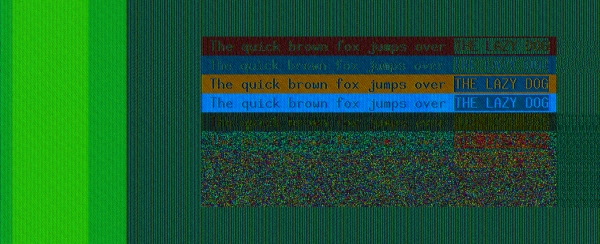Submitted by auto on Wed, 16/10/2024 - 16:50
 For their research into ways that spies can pick up information by 'eavesdropping' on the signals that computer devices emit, Dimitrije Erdeljan and Markus Kuhn from the Department's Security Research Group have won a Best Paper Award.
For their research into ways that spies can pick up information by 'eavesdropping' on the signals that computer devices emit, Dimitrije Erdeljan and Markus Kuhn from the Department's Security Research Group have won a Best Paper Award.
They received the award for their work on demonstrating the 'Benefits of coherent demodulation for eavesdropping on HDMI emissions' at the recent EMC Europe 2024 conference - the International Symposium and Exhibition on Electromagnetic Compatibility.
They presented their work in a special-session on TEMPEST research, which studies what information spies can extract from the electromagnetic radio signals that nearby computer devices unintentionally emit, as a result of the switching currents of digital signals carried over cables.
In this work, Erdeljan and Kuhn looked at unintentional radio emissions emitted by HDMI video cables. It has long been known that such signals can be converted back into readable text, by connecting an amplitude-demodulating radio receiver to a receiving antenna and then converting the resulting output into a raster image, similar to what analogue black-and-white television sets once did.
However, this simpler type of demodulation discarded phase information, such as the precise relative timing of the bit patterns on the cable. As a result, many combinations of foreground and background colour on a display could not be distinguished well by an eavesdropper, if their signals differed only in phase, but not in amplitude.
 Erdeljan and Kuhn have instead used a software-defined radio (SDR) receiver, a device that preserves both amplitude and phase information. They then developed an algorithm for stabilising the phase information provided by such a receiver, which enabled them to apply a statistical dimensionality-reduction technique, Principal Component Analysis, that results in significantly better discriminating between different image colours. Their work sheds a new light on the risk of eavesdropping on video signals.
Erdeljan and Kuhn have instead used a software-defined radio (SDR) receiver, a device that preserves both amplitude and phase information. They then developed an algorithm for stabilising the phase information provided by such a receiver, which enabled them to apply a statistical dimensionality-reduction technique, Principal Component Analysis, that results in significantly better discriminating between different image colours. Their work sheds a new light on the risk of eavesdropping on video signals.
In another presentation at the same conference, Kuhn and Erdeljan gave examples of how such emissions have previously allowed eavesdropping attacks on electronic voting machines, which were found to unintentionally broadcast confidential votes tens of metres away.

